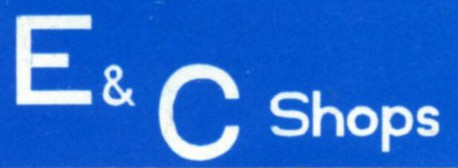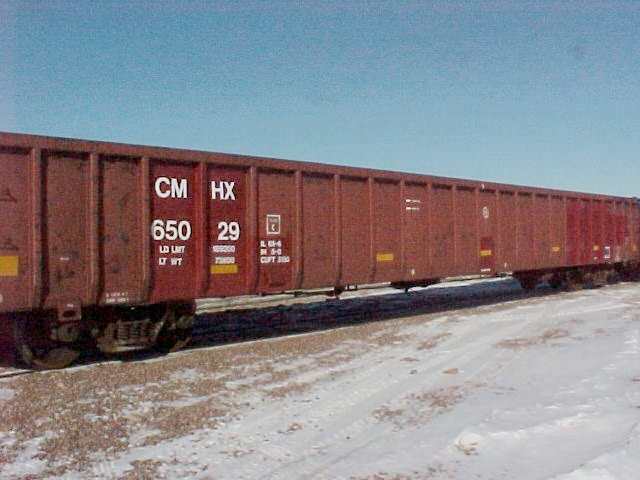Model Information: E&C shops originally designed this tooling. It was later acquired by LBF and then by Hubert's and as of recently by InterMountain. Cars come factory equipped with Micro-Trains® trucks/couplers and are available with a variety of different loads. Examples can be found with E&C, LBF and Hubert's branding. InterMountain (as of 4/2019) has not yet produced a release though they definitely now have possession of the molds.
Prototype History: Generally used to haul scrap metal and loose bulk materials, gondola cars vary in length and side heights. Mill Gondola cars are more commonly used for high-density commodities and have a flat bottom while regular Gondola cars are most commonly used for coal or crushed aggregates and can have a flat or tub bottom configuration.
Steel-sided 65' mill gondolas date back to at least the 1940s, however specialized rib-sided "mill" gondolas are a relatively modern design. These cars are intended for use with the steel trade, and they are used to transport just about anything that can be loaded using an overheard crane. They date from the 1970s forward.
Steel-sided 65' mill gondolas date back to at least the 1940s, however specialized rib-sided "mill" gondolas are a relatively modern design. These cars are intended for use with the steel trade, and they are used to transport just about anything that can be loaded using an overheard crane. They date from the 1970s forward.
Road Name History: The Denver & Rio Grande Western Railroad (reporting mark DRGW), often shortened to Rio Grande, D&RG or D&RGW, formerly the Denver & Rio Grande Railroad, was an American Class I railroad company. The railroad started as a 3 ft (914 mm) narrow gauge line running south from Denver, Colorado in 1870. It served mainly as a transcontinental bridge line between Denver, and Salt Lake City, Utah.
In 1988, the Rio Grande's parent corporation, Rio Grande Industries, purchased Southern Pacific Transportation Company, and as the result of a merger, the larger Southern Pacific Railroad name was chosen for identity. The Rio Grande operated as a separate division of the Southern Pacific, until that company was acquired by the Union Pacific Railroad. Today, most former D&RGW main lines are owned and operated by the Union Pacific while several branch lines are now operated as heritage railways by various companies.
In 1988, the Rio Grande's parent corporation, Rio Grande Industries, purchased Southern Pacific Transportation Company, and as the result of a merger, the larger Southern Pacific Railroad name was chosen for identity. The Rio Grande operated as a separate division of the Southern Pacific, until that company was acquired by the Union Pacific Railroad. Today, most former D&RGW main lines are owned and operated by the Union Pacific while several branch lines are now operated as heritage railways by various companies.
Brand/Importer Information:  E&C Shops made decent and inexpensive Wood Chip Cars and Coalporters (their first offerings). They were genius because they made mass produced multiple road numbers available at the same time, something that the big guys are just now embracing after years of cycles of watching for announcements and checking the ones you already have. At the time and at least 10 years beyond it was nice to grab a dozen BN coalporters with different numbers in a box and go. Kudos to Fred Becker and Hubert for trying something different and cutting edge. Their Bethgons were less expensive and more detailed than later big-name productions.
E&C Shops made decent and inexpensive Wood Chip Cars and Coalporters (their first offerings). They were genius because they made mass produced multiple road numbers available at the same time, something that the big guys are just now embracing after years of cycles of watching for announcements and checking the ones you already have. At the time and at least 10 years beyond it was nice to grab a dozen BN coalporters with different numbers in a box and go. Kudos to Fred Becker and Hubert for trying something different and cutting edge. Their Bethgons were less expensive and more detailed than later big-name productions.

Item created by: CNW400 on 2024-10-27 16:36:46. Last edited by CNW400 on 2024-10-27 16:37:06
If you see errors or missing data in this entry, please feel free to log in and edit it. Anyone with a Gmail account can log in instantly.
If you see errors or missing data in this entry, please feel free to log in and edit it. Anyone with a Gmail account can log in instantly.





